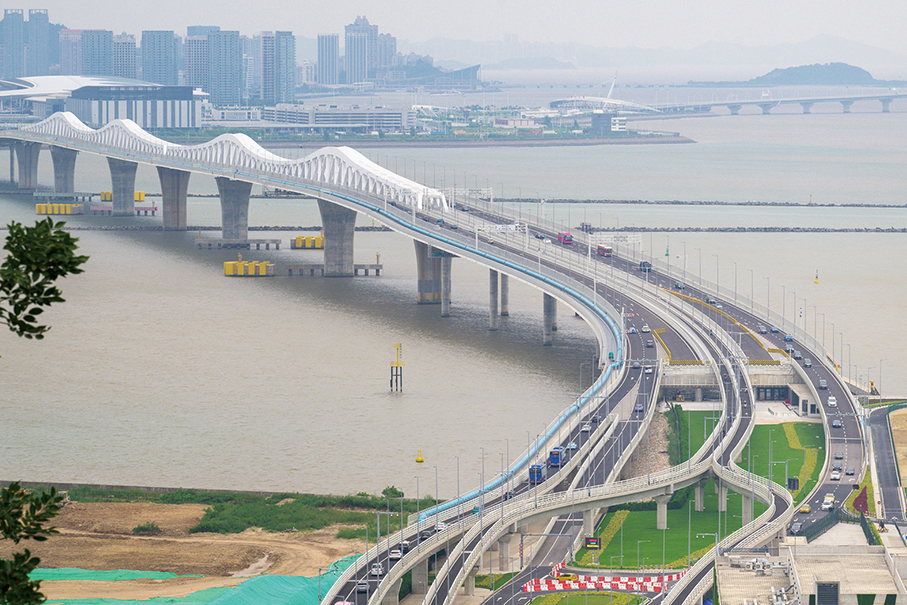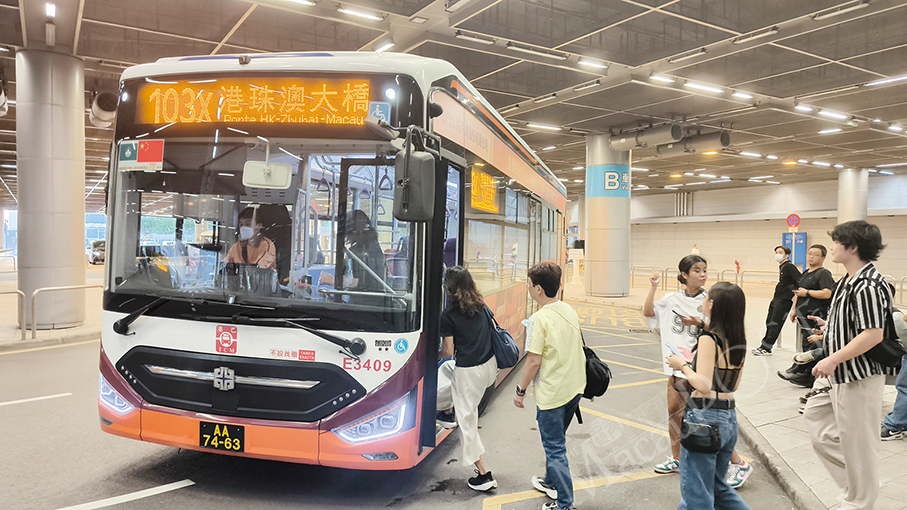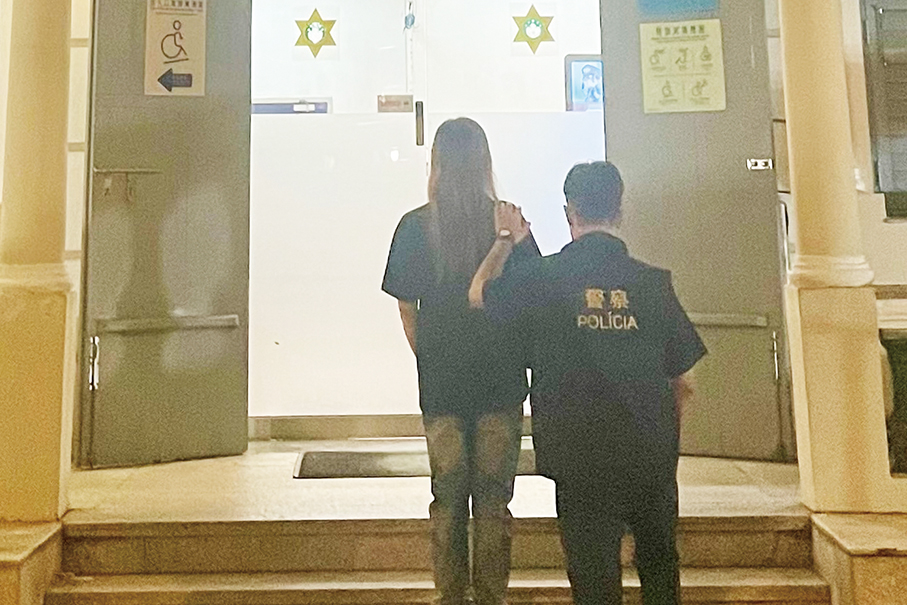Macau Bridge, which officially opened to vehicular traffic at 2 p.m. on Tuesday, National Day, was inaugurated by Chief Executive Ho Iat Seng three hours earlier where he said that the fourth Macau-Taipa bridge’s operation would help improve the population’s well-being and promote the city’s appropriate economic diversification.
Macau Bridge is the city’s fourth sea crossing connecting the Macau peninsula and Taipa island, after Sai Van Bridge, Friendship Bridge, and the Governor Nobre de Carvalho Bridge (informally known as the “old bridge”), which opened in 2005, 1994 and 1974 respectively.
The 3.1-kilometre-long Macau Bridge connects the Zone A and Zone E1 land reclamation areas, which are both new urban areas. Zone A, on the peninsula side, is primarily being developed for public housing projects, which is still uninhabited, while Zone E1, located next to the Taipa Ferry Terminal at Pac On, is earmarked for government facilities as well as commercial and residential purposes, where a number of government facilities are in use such as the new Public Security Police (PSP) headquarters.
The 1.38-square-kilometre Zone A is located between the peninsula’s north-eastern coast and the man-made island where the Hong Kong-Zhuhai-Macau Bridge (HZMB) Macau checkpoint is located.
Currently, there are two links connecting Zone A and the HZMB man-made island, while there is only one link between the peninsula and Zone A, i.e., the one at the busy Oriental Pearl roundabout (Rotunda da Amizade) on the peninsula’s north-eastern coast.
In addition to Zone A, the new bridge is also directly connected to the HZMB man-made island through a spur.
Inauguration
Macau Bridge’s inauguration ceremony was held near its entrance and exit on the Taipa side, on a site near the new PSP headquarters in Zone E1, at 11 a.m. on Tuesday.
The bridge’s inaugural plaque was jointly unveiled by Ho as well as Chinese People’s Political Consultative Conference (CPPCC) National Committee Vice Chairman Edmund Ho Hau Wah, Central People’s Government Liaison Office in the Macau Special Administrative Region (MSAR) Director Zheng Xincong, Foreign Ministry Commissioner Liu Xianfa, People’s Liberation Army (PLA) Macau Garrison Political Commissar Lin Qinghua, Macau Legislative Assembly (AL) President Kou Hoi In, China Railway Construction Corporation Limited (CRCC) Chairman Dai Hegen, Secretary for Transport and Public Works Raimundo do Rosário, Public Works Bureau (DSOP) Director Lam Wai Hou, and Transport Bureau (DSAT) Director Kelvin Lam Hin San.
The bridge project was carried out by a building consortium consisting of three construction companies (two state-owned enterprises and a local company) for a price tag of 5.27 billion patacas, namely China Civil Engineering Construction Corporation (CCECC), China Railway Construction Bridge Engineering Bureau Group Co. Ltd., which is a CRCC subsidiary, and Omas Construction and Engineering Company Limited.
The fourth Macau-Taipa bridge opened on Tuesday after its construction got off the ground on March 26, 2020 and was fully completed in July this year.
‘Beautiful gift for double celebrations’
Delivering a speech during the ceremony, Ho said that Macau Bridge’s opening is a “beautiful gift” for this year which marks Macau’s “double celebrations”, the 75th Anniversary of the founding of the People’s Republic of China (PRC) on October 1 and the 25th Anniversary of the establishment of the MSAR on December 20.
Ho, who is not seeking a second five-year term as a chief executive, underlined during Tuesday’s ceremony that the main aim of his government’s urban development is to create a favourable living and working environment for residents. The government will continue to advance its urban planning and improve urban infrastructures with the aim of promoting Macau’s sustainable development, the chief executive said.
Ho said that Macau Bridge, as an important transport infrastructure near the Hong Kong-Zhuhai-Macau Bridge (HZMB), does not only improve Macau’s overall transport network but also makes it more convenient for residents and visitors alike to get out and about.
Ho said that Macau Bridge’s operation will help Macau achieve its aim of developing into a World Tourism and Leisure Centre, improve the population’s well-being, and promote the city’s appropriate economic diversification.
New public bus route
Macau Bridge is 3,085 metres long, with its water-spanning section being 2,860 metres, including two 280-metre-long spans for ship navigation channels. The bridge has eight vehicular lanes – four in each direction, with one lane in each direction for motorcycles only.
The bridge has a maximum speed limit of 80 kilometres per hour, while the maximum speed limit for the motorcycle lanes is 60 kilometres per hour.
The bridge’s spurs on both the peninsula and Taipa sides have a maximum speed limit of 40 kilometres.
A new public bus route, No.103X, started operating after Macau Bridge opened on Tuesday afternoon, running between the HZMB Macau checkpoint and the Taipa Ferry Terminal, which is served by the Light Rail Transit (LRT) system, via the new bridge.
The new No.103X route runs between 6 a.m. and 11:30 p.m. daily, with each trip departing every 10 to 15 minutes.
The route is jointly operated by the city’s two public bus operators, TCM and Transmac, by switching between the two every month.

Vehicles travel on Macau Bridge soon after it opened on Tuesday afternoon. – Photo: GCS

Passengers catch a No.103X bus at the Taipa Ferry Terminal on Wednesday. – Photo: Tony Wong









